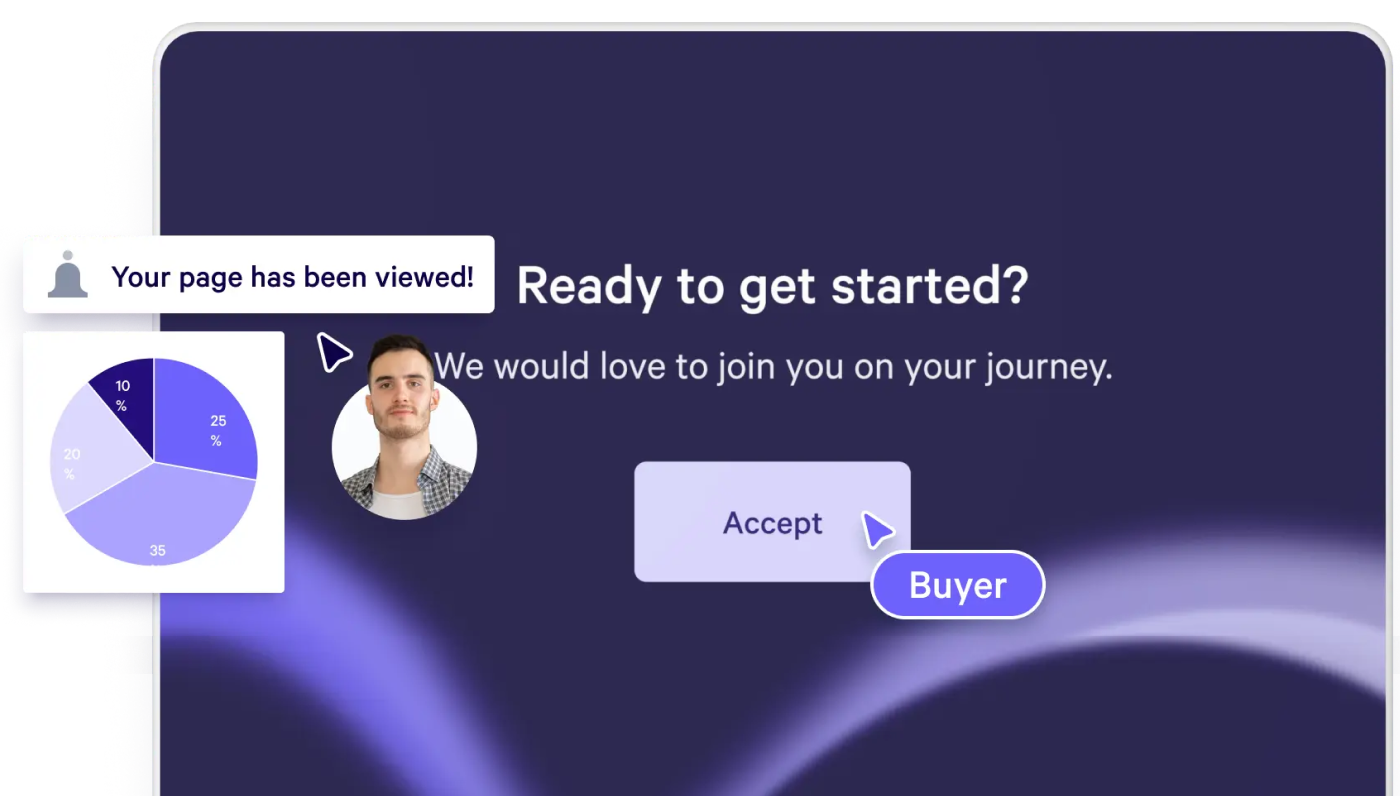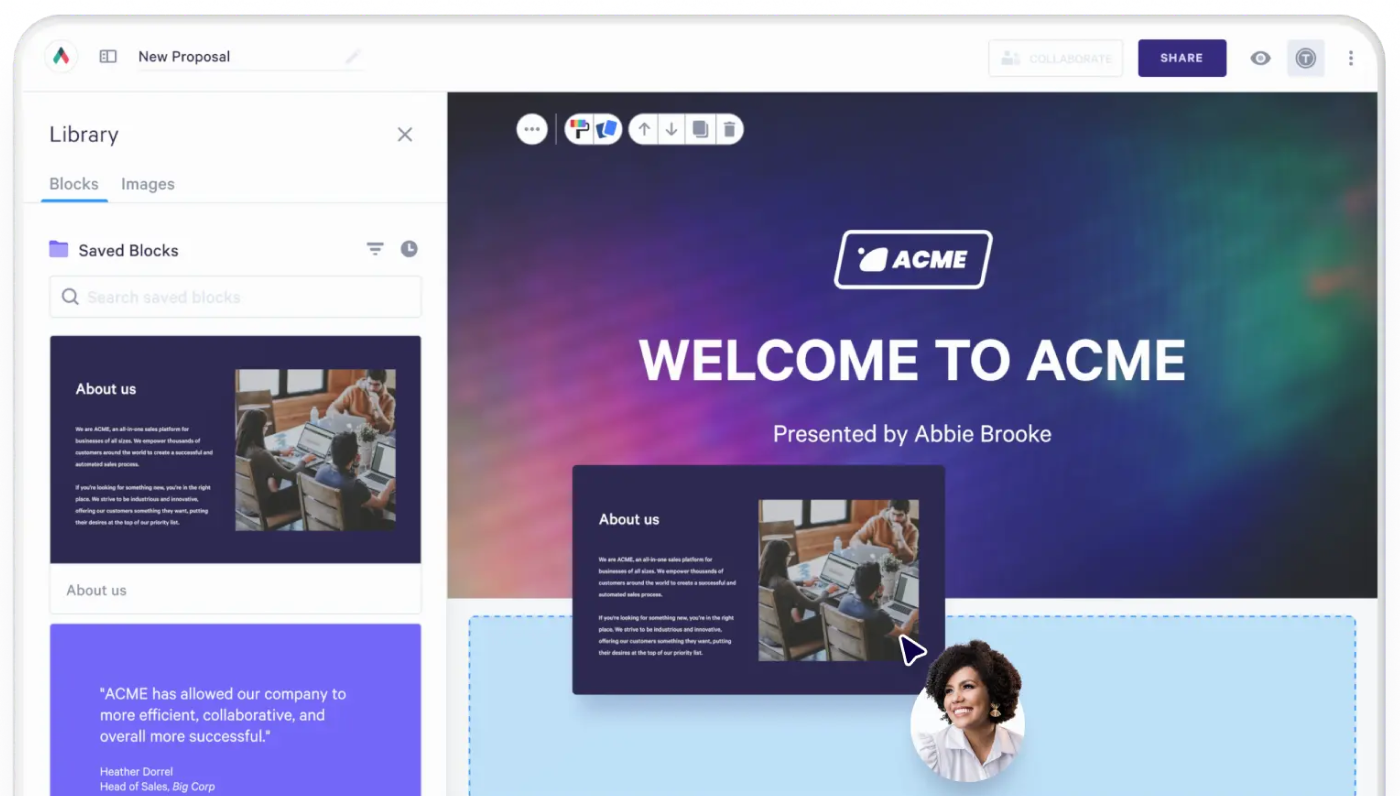
As the economy goes up and down, you may see your sales team’s performance do the same. So how can you consistently improve sales performance even in tumultuous economic times?
With inside sales and sales development roles on the rise, more teams are tracking customer satisfaction than whether they meet their quotas. New technologies come out every day that make it easier to understand precisely what your customers want. So now is the time to take hold of this data and make moves.
Even if your sales team attains 100% of the goal, there’s always room to improve. Keeping your strategies modern and fresh gives you a competitive edge. If you’re already there, finding the next big step future-proofs you against your competitors.
We’ve aggregated seven ways to consider modernizing your sales team, from strategies that focus on individual rep performance and ongoing maintenance of your data to automating traditionally human-held roles with machines. Read on to bring your team up to speed.
Seven actionable strategies to maximize your results
If you want to get results in sales, it’s not enough for reps to work hard. You also want to make sure they’re working smart and leveraging every tool available. Even if you’re supporting and coaching consistently, putting these strategies in place in your organization can help your teams improve and increase sales productivity.
1. Have a definitive sales strategy
While the sales organization at your company should have an overarching strategy, it’s time to get more specific. You can work with each of your sales reps to understand which deals have been the smoothest to close and the most profitable for your organization.
It might be that you have the shortest sales cycle when pitching deals directly to CFOs of 250-750 person companies that have $1.5 - $10M in revenue. You may see that you close fastest when you can get these folks on the phone instead of sending a lot of emails.
Once you know who your best customers are and how they like to be sold to, look for more of those and repeat the tactics that are helping you make the most effective sales, and watch your close rate soar!
2. Use a CRM
You might not consider leveraging a CRM a ground-breaking strategy, but stay with us. The CRM came into existence in the 1980s, but technology has improved tremendously since then. It’s time to look at your CRM and ask yourself honestly if you’re using it to its full potential. Chances are, you aren’t.
Having reps enter data into a CRM isn’t just a check-the-box activity or an exercise in administrative torture. If you treat it as a critical part of your team’s workflow, it can help with a number of sales activities like sales forecasting, sales planning, and managing the sales pipeline.
You can also use the sales data entered into other CRM to track the sales cycle length and highlight some of your best and most profitable deals.
Having these processes work smoothly might take a bit of effort. You’ll want to start by getting all of your data connected. Tools like Zapier and IFTTT make it easy to funnel your customer information and data around your interactions into your CRM. Depending on what tools you are looking to connect, there may even be a native integration available.
Associating data with individual records makes your salespeople even more effective. Use this information for more effective targeting and a better rationale for knowing when to stop working on a deal.
You can also automatically create personalized proposals using CRM-connected tools like Qwilr that can pull in data and reduce busywork. You don’t have to use guesswork or rely solely on your intuition when you have history and data to back you up.
3. Automate your processes
Do you know how much of your sales rep’s time is spent selling? Probably a lot less than you think. But don’t take our word for it; 67% of reps say less than half of their day is spent selling. That means that you could be working on automating at least some of the work that they are doing to free up a bit more of that time.
There are a few low-hanging tasks that many sales organizations tackle first. Those are:
- Allow your customers to book their times and automate calendar functionality.
- Initial outreach and follow-up emails.
- Standardizing the sales cycle to make taking prospects through the sales cycle more efficient.
- Notifications for proposal and document updates.
- Data capture so that your reps aren’t spending time entering data and sales activity into the CRM manually.
Sales automation doesn’t need to be inhuman. Add it to your workflow where it makes sense, not just where it fits. Even if you only automate a few things, it will significantly impact your day-to-day and give your reps more time to focus on selling.
You can use sales automation software and tools to help with this.
4. Leverage reviews
Is your team constantly looking for better language to use when writing messaging for emails, proposals, or sales conversations? Try reading reviews of your product or service. These will give you the right words to help your pitch land well with your potential customers.
Need to overcome some objections? Looking at the less favorable reviews can help highlight reasons why your product or service may not have worked for a specific customer or customer type so you can address this head-on and make sure you’re selling the right solution to the right customer.
Social media may also give you additional clues. Look at how people are engaging with your business or brand. Are they engaging with your content? What are they talking about? These topics can help you create sales messaging or even help your marketing team create content.
5. Personalise your sales collateral & proposals
No one likes getting generic collateral or a proposal that feels like it was just copied and pasted from the last one. This is why you’ll likely see your conversion rate steadily increase as you can personalize sales materials.
Creating a personalized sales proposal doesn’t have to be a big undertaking. With Qwilr’s sales proposal software, your team can personalize both proposals and sales collateral in minutes. You can set up a proposal template for each product or service you sell.
You can then select which pages you want to send to your prospective customer and add a personalized note. Remember to add any specific details your prospect has shared with you, as it will demonstrate that you’ve been listening to them throughout the sales process.
6. Analyze your sales metrics
We already discussed gathering data in your CRM and feeding this data into some dashboards to help you track your progress. To keep improving your sales performance, it’s important that you analyze this data frequently and use the insights you’re able to derive to keep improving your performance and quota attainment.
At Qwilr, we recommend that modern sales teams regularly track sales velocity, efficiency, and productivity to maximize team performance.
The key performance indicators you want to look at are things like your win rate, the number of sales activities you’re performing each day, the average length of your sales cycle, how often you’re closing deals, and how often (and when) reps are hitting their individual sales quotas.
The insights gained from these indicators can be used to optimize your sales processes and boost performance for your team.
7. Manage your salespeople effectively
Managing a sales team effectively can be challenging, especially for new sales leaders. Another hurdle to overcome is getting enough face time with your team members as travel has begun to pick up, and many teams are choosing to allow sales professionals to work remotely. Virtual selling is here to stay, and as a leader, you need to be able to support your team.
Providing regular feedback, sales training, and sales coaching is critical to the team's success. In addition to helping your reps hit their sales goals, you also want to help them develop skills that will help them grow in their careers.
Whether team members are remote or in the office with you, ensure you’re meeting with reps 1:1 regularly to ensure you’re helping them to succeed and coaching them on any areas of performance that need improvement.
How to measure sales performance improvements
Obviously, the easiest way to see improvements in your sales performance is to watch your close rates increase. But this isn’t the only indicator of a team improving their performance.
Now that you and your sales teams are tracking key performance indicators, here are a few sales performance metrics you want to watch for signs of improvement. Beware of tracking vanity metrics or tracking activity just for the sake of tracking it.
This encourages reps to engage in the wrong behavior and doesn’t help move the needle for your organization. These metrics should help you and your sales team with decision-making and overall sales performance management.
Before you start looking at these metrics to see if your sales performance is improving, don’t forget to set some benchmarks so you know where you’re starting and can see improvements over a period of time.
Increased conversion rates
This one seems pretty obvious, but an increase in conversion rates indicates that your sales team is performing well. You’re probably tracking conversions in real-time, so as you see the conversion rate go over the benchmark per time period- it’s something to celebrate.
Just don’t forget to consider seasonality if you work in a seasonal business. So if your peak sales season is from April to July, don’t stress too much if your December conversion rate isn’t breaking records.
What can be helpful is also to compare the same timeframe year over year. So if you closed five more deals in December 2022 than in December 2021, that’s still an indication things are going in the right direction.
Shorter sales cycles
While sales cycle duration can vary from deal to deal, you can use the data in your CRM to determine the average length of a sales cycle and use that number as your benchmark. While you don’t want to encourage your sellers to rush prospects through the sales process, you do want to challenge them to be more efficient.
The extra time they gain from this efficiency through shortened sales cycles can then be used to go after additional sales opportunities.
Increased deal size
Another indication that your sales performance is improving is that your average deal size is increasing. The reporting tools in your CRM should be able to show your average deal size, and you can watch this number over time.
Increasing your average deal size can also help your team achieve your revenue goals faster.
Improved customer experience
While improved customer experience sounds vague, it is actually something that can be quantified. To understand if and how customer experience is improving, consider implementing Net Promoter Scores (NPS) and customer surveys.
Asking customers for feedback along the sales process and after the deal has closed can give you valuable insights into how your team is performing and delivering on promises for customer success.
Increased customer retention rate
While this one may fall more to operations than sales, it’s a metric that you, as a sales leader, want to keep an eye on. If customers are churning frequently or in a specific time frame (like 90 days after implementation), this could indicate an issue in the sales process.
If customers feel that their experience doesn’t match what they were sold and they exercise their right to terminate the contract, this is something you’ll need to address with your sales team.
Watching customer retention rates and the average contract length increase can be a good indication that customers are happy with the deals they were sold.
FAQ
What is a good sales performance?
Good sales performance can be measured by how effectively your sales team performs during a period of time. Indicators of good performance include achieving sales targets and sales and revenue goals.
Which KPIs should you track for sales performance?
Many KPIs can help sales leaders understand their team’s sales performance. These could include the number of active leads in the pipeline, the amount of outreach being conducted, the number of presentations, proposals, and meetings, the number of deals closed won, and the average deal size.
What drives sales performance?
Sales performance can be driven by the tools and resources provided to the sales team. This can include sales training, sales tools, and incentive compensation for performance.
Supporting your sellers to achieve business goals
Sales performance in your organization is a team effort. As a sales leader, your role is to provide resources, training programs, and support for your team. Additionally, the data that you’re able to get from your CRM and other sources can be used to illustrate performance metrics and help you to focus your efforts, and help your team improve.
If you need robust sales collateral and proposals to win over new customers, look no further than Qwilr. Our proposal software makes it easy for sellers to create beautiful and professional proposals in minutes. We integrate with popular CRMs like Salesforce to make personalization a breeze.
And when it comes to sales metrics, we can help with that too. Qwilr’s data collection and analytics capabilities can help give sales reps an understanding of which prospects are engaged and enables sales reps to determine how and when they drive deals forward.
Want to see how this works? Book a demo to see what Qwilr can do for your sales team.
About the author

Marissa Taffer|Founder & President of M. Taffer Consulting
Marissa Taffer is the Founder & President of M. Taffer Consulting. She brings over 15 years of sales and marketing experience across various industries to a broad range of clients.




